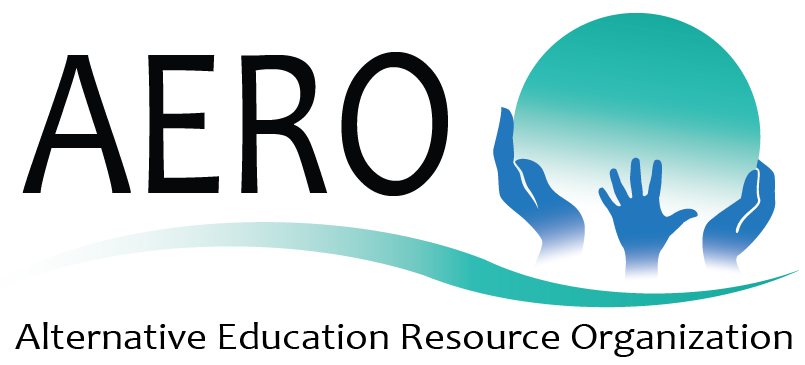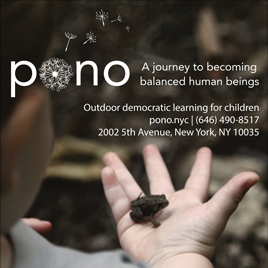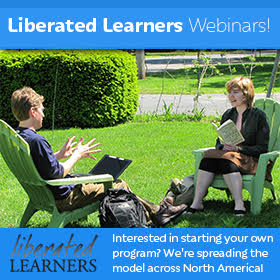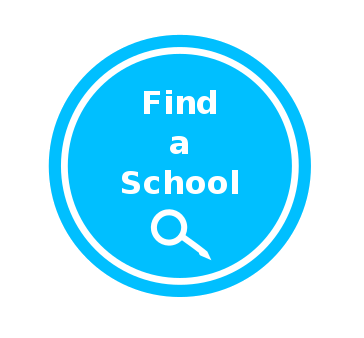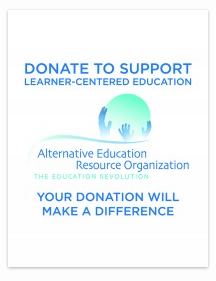Category: Articles
Are KIPP schools Racist?
Ed:
Please send any comments on this to Jerryaero@aol.com
I follow Whitney Tilson’s blog. He is a hedge fund manager who also sits on the board of KIPP schools. I disagree with much of what he posts but agree with other parts. And I’m always searching for common ground in the movement. He is a strong supporter of KIPP and the charter school movement. He gave me permission to post what I wrote to him and his blog in response to an attack on him by a teacher at the Calhoun School, a progressive private school in Manhattan:
FROM WHITNEY TILSON BLOG
Things like this make me groan and hold my head in my hands. Steve Nelson, the head of Calhoun, an elite, highly progressive Manhattan private school, in an essay he published in HuffPo (that I agree with!) decrying racism in this country, attacked me and “no excuses” charter schools, naming KIPP, Success and Democracy Prep:
A prominent hedge fund manager in Manhattan is a leading advocate for "no excuses" charter schools, such as KIPP (Knowledge Is Power Program), Success Academies and Democracy Prep. Well-documented reports reveal that children at KIPP have been punished by being labeled "Miscreants," students at Success Academies have wet their pants due to stress and the refusal to allow them to go to the bathroom, and children at Democracy Prep have been shunned, branded by wearing yellow shirts and literally forced into silence, with other children and adults forbidden to speak to them. This "reformer" is on the record saying that these means of discipline are necessary because these children, nearly all of color, "need it." His own daughters attend Nightingale-Bamford, a highly selective, expensive, majority white, girls school on Manhattan's Upper Eastside. Please indicate the way you believe he might respond if any of his daughters reported such experiences during their school days.
Nelson is someone who should be our ally because he clearly cares deeply about the vast racial inequalities in our country, especially in education (in which we have a K-12 system where the quality of the school a child attends is primarily determined by two factors: the color of their skin and their zip code). Yet instead of championing high-quality charter schools that are addressing this very issue, he attacks them for being racist. Ya can’t make this stuff up!
What he writes is so wrong-headed in so many ways – but I guess that’s not surprising since the extent of his knowledge and research seems to be limited to reading Ravitch’s blog. (I surely hope that Mr. Nelson is a better model of intellectual honesty, curiosity and rigor for the students at Calhoun than he shows here.) He certainly doesn’t know me nor did he attempt to contact me (I’m not hard to track down – try WTilson@kasecapital.com or (646) 258-0687), nor, to my knowledge, has he ever visited any of the schools he smears so ignorantly (for example, far from being “branded by wearing yellow shirts and literally forced into silence,” the students at Democracy Prep wear these shirts with pride for civic events like its Get Out the Vote campaigns). If he truly wishes to understand these schools, he should visit them – they’re all less than a 15-minute cab ride from his school and I’m certain they would welcome him (here’s the contact information for each: KIPP, Vicki Zubovic, vzubovic@kippnyc.org; Success: (646) 597-4641; Democracy Prep: Katie Duffy, kduffy@democracyprep.org).
As for Nelson’s implication that I’m racist because, he claims, that I believe that cruel “means of discipline are necessary because these children, nearly all of color, "need it."”, this is absurd. I don’t believe nor have I never said any such thing.
Notice that he only quotes two words (“need it”) (presumably from one of my emails) without providing any context – a classic way to dishonestly smear someone. Imagine, for example, that I published an article in which I wrote: “Steve Nelson punishes students at Calhoun by labeling them ‘miscreants’, which causes them to ‘wet their pants due to stress.’” He, in fact, wrote the words I quote in his HuffPo article – but of course the sentence I’ve written is false, dishonest, and the exact opposite of what he actually believes.
I’ve searched all of my ed reform emails for the past five years for the words “need it” and couldn’t find them (though they appear many times in various articles I forwarded in sentences like “We need to get extra help to students who need it”, but nothing related to discipline).
My best guess is that he’s referring to something I wrote long ago in which I observed that my daughters’ school doesn’t have slogans like “Climbing the Mountain to College” painted on the walls, whereas many high-performing charters do. Why? Because my daughters and their classmates, from the day they were born, have been surrounded by adults who all graduated from college. It would never occur to them not to go to college or not to finish college because they don’t know anyone who hasn’t done so. It’s in the air that they breathe. But, it goes without saying, it’s most certainly not in the air in the lives of most of the children most charter schools serve – so the charters have to instill it.
Or maybe he’s referring to another email I sent in which I shared a conversation I had with Joanna Belcher, the rockstar principal of KIPP’s Spark Academy elementary school in Newark (Dale Russakoff writes about her glowingly in The Prize: Who's in Charge of America's Schools?). I observed Joanna and her staff teaching the little children to walk quickly and quietly in line. Time after time, one or two children would get distracted and start talking or fall out of line and they’d all have to do it again.
Afterward, I told Joanna, “You know, there are a lot of folks who’d watch that and think that what you’re doing is overly harsh and militaristic.” She laughed and said (I’m paraphrasing from distant memory), “When I first started teaching, I thought so too. But then I learned. We only have kids for a certain number of hour every day – and we (and they) can’t afford to waste a single minute. Our kids are moving between classrooms, to lunch, etc. a dozen times a day. Imagine if we wasted five minutes each time – that would be an hour a day down the drain!”
In summary, schools that successfully educate the most disadvantaged kids and give them a fair shot in life need to do a lot of things differently vs. schools like Calhoun and Nightingale that serve almost entirely the most advantaged kids. It’s not because they’re racist, but because different students have different needs that need to be addressed in different ways. Steve Nelson, before you publish any more rubbish about some incredible, inspiring charter schools, take the time to come see them and learn the truth.
If he visited a KIPP school, maybe Nelson would meet someone like this and the scales would fall from his eyes:
My name is Wydeyah Hay and I am a TEAM Academy (KIPP New Jersey) founding class member, part of the first class when TEAM opened in 2002. This fall, I returned to the classroom as a Relay Resident at KIPP’s Seek Academy. Through this program I’ll be on my way to earning a master’s degree by apprenticing in a well-run classroom. It was because of the values that KIPP helped instill in me that I was inspired to become a teacher and support my community. While some of the things I’ve read have said that reform has failed in Newark, or that it was a “wash” for Newark’s kids, I am living proof that this is not the case. Over the last five years, KIPP has opened four new schools in Newark and has grown to serve roughly 2,000 more kids. And politicians need only to see what I see in my school each day, that’s no “wash” for the kids in these classrooms. Coming from Newark, people often have the perception that it’s unfriendly or that if you stay here your future will be limited. My teachers and school leader at KIPP New Jersey helped me realize that there was more than being another statistic. To be blunt, I believe they saved my life. And now I’m back in my community to do the same. My teachers at KIPP always enforced extending my education and climbing the mountain to college. With their support I got into Immaculate Conception High School (ICHS) in Montclair, NJ after graduating from TEAM Academy middle school in 2006. I went on to attend Virginia State University (VSU). I was determined to stay in school and I always made great grades. And KIPP helped support me every step of the way both emotionally and financially.
It is because of them that I graduated from college with honors.
JERRY:
Hi, Whitney!
I'm essentially on the other side in this discussion but I try to be open-minded.
The reason why I tend to disagree is because we have been instrumental in founding democratic schools that have a sliding-scale tuition, and therefore, have a high proportion of minority students. And those students do very well with this approach and clearly don't need the kind of discipline you described at Spark Academy. I believe that all students can do well in freedom, in an environment in which students are empowered to make real decisions about their school and their life.
If you follow our work you know that we also support the POTENTIAL for charter schools (although too many now look like regular disempowering mainstream schools) and the concept of school choice. So we are not on either of these "sides." we are on the side of the children.
Yours,
Jerry
Memorable Teaching
Memorable Teaching, By Lynn Stoddard
“People cannot learn by having information pressed into their brains. Knowledge has to be (pulled) into the brain, not pushed in. First, one must create a state of mind that craves knowledge, interest and wonder. You can teach only by creating an urge to know.”
The author of these words, Victor Weisskopf, was a world renowned Jewish scientist who escaped from Nazi Germany and helped develop the atomic bomb. He was known as a “memorable teacher.” He encouraged his physics students to ask questions by saying, “There is no such thing as a stupid question.” Weisskopf taught that it is by the use of questions that students pull information into their brains. He taught by creating an “urge to know.”
What is the difference between information that is pressed into a student’s brain and information that is pulled in? Is there a difference between required learning and self-chosen learning? Plato said, “Knowledge which is acquired under compulsion obtains no hold on the mind.”
Memorable teaching, in its purist form, may be the act of stimulating and enlarging something we were all born with — curiosity. This is reinforced by Christ’s words in the Bible, “Ask and it shall be given you; seek and ye shall find; knock and it shall be opened unto you.” We can interpret “ask,” “seek,” and “knock” as ascending levels of the “urge to know.”
What happens if students are taught math and reading, before they have a desire to know? According to research done by Peter Gray of Boston College and others, too early academic training results in long term intellectual and psychological damage.
Early failure experiences result in young children hating school and losing confidence in their ability to learn, a precursor for many to later drop out and become burdens to society — in and out of prison. Schools that are based on pressing a standardized curriculum into student’s minds may also be the root cause of becoming a loner, bullying and violence to others.
In later school years, required, assigned learning becomes shallow and temporary as students learn information to pass tests and discard it soon thereafter. It is becoming more and more evident that self-chosen knowledge, the kind that is “pulled in,” is the only kind that is deep and enduring.
Ever since the federal government started to take over public education and impose a curriculum to be pressed into student’s heads, it has become increasingly difficult for teachers to cultivate an “urge to know” and encourage students to ask questions. Memorable teaching, the kind that makes a positive difference in people’s lives, is rare.
If you are a concerned parent, legislator, school board member, teacher, administrator or student, ask for your freedom, as specified by the 10th Amendment, to develop a local school system that encourages and supports teachers to be the great, memorable people they want to be. You can also work at transforming yourself into a great teacher, holding up examples like Weisskopf, Einstein or Christ, the most memorable of them all. In so doing, you will make a difference in the lives of others and become memorable to them.
